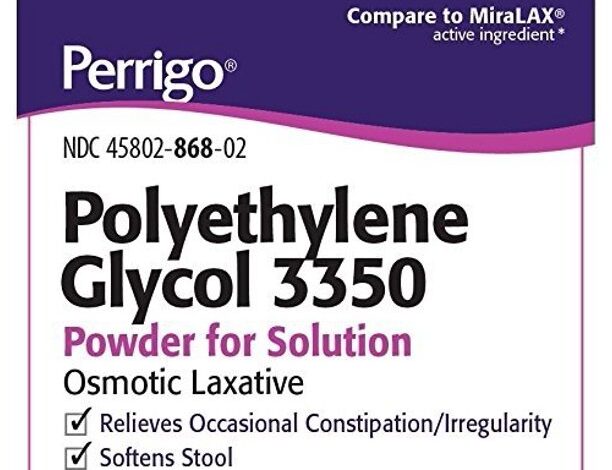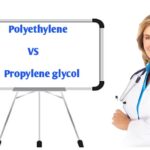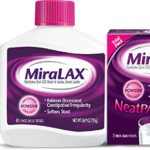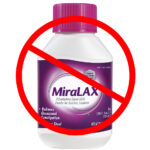7 Polyethylene Glycol 3350 Warnings You Should Know

Polyethylene glycol 3350 is used to treat occasional constipation. Polyethylene glycol 3350 is in a class of medications called osmotic laxatives. It works by causing water to be retained with the stool. This increases the number of bowel movements and softens the stool so it is easier to pass.
According to studies, the long-term efficacy and safety of polyethylene glycol (PEG) in constipated children are unknown, and a head-to-head comparison of the different PEG formulations is lacking.
How should this medicine be used?
Polyethylene glycol 3350 comes as a powder to be mixed with a liquid and taken by mouth. It is usually taken once a day as needed for up to 2 weeks. Follow the directions on your prescription label carefully, and ask your doctor or pharmacist to explain any part you do not understand. Take polyethylene glycol 3350 exactly as directed.
Polyethylene glycol 3350 may be habit-forming. Do not take a larger dose, take it more often, or take it for a longer period of time than your doctor tells you to.
It may take 2 to 4 days for polyethylene glycol 3350 to produce a bowel movement.
To use the powder, follow these steps:
1. If you are using polyethylene glycol 3350 from a bottle, use the measuring line on the bottle cap to measure a single dose (about 1 heaping tablespoon). If you are using polyethylene glycol 3350 packets, each packet contains a single dose.
2. Pour the powder into a cup containing 8 ounces (240 milliliters) of water, juice, soda, coffee, or tea.
3. Stir to dissolve the powder.
4. Drink immediately.
Polyethylene Glycol 3350 Warnings
Polyethylene glycol 3350 is a nontoxic and highly soluble compound that is minimally absorbed in the gastrointestinal tract. Due to these properties, PEG acts as an osmotic agent, increasing fecal water content.
However, within the past few years, the FDA has received a number of reports of adverse events including neuropsychiatric symptoms in children taking PEG 3350, which include:
- Tics
- Anxiety
- Rage
- Paranoia
- Phobias
- Mood swings and depression.
The exact incidence of these neuropsychiatric symptoms in patients being treated with Polyethylene glycol 3350 for functional constipation is not known, and, because the reported adverse events are extremely vague.
An ongoing study is looking into the safety of this medication in response to reports that a number of children developed “neuropsychiatric problems” after taking MiraLAX a brand of Polyethylene glycol 3350.
The researchers from The Children’s Hospital of Philadelphia (CHOP) are looking specifically at polyethylene glycol 3350 and similar generic products. Medications containing PEG 3350 are not labeled for use in anyone under 17, but MiraLAX is often recommended off-label by pediatricians to treat chronic constipation in kids — sometimes for extended periods of time, even though the label advises “use no more than 7 days.





